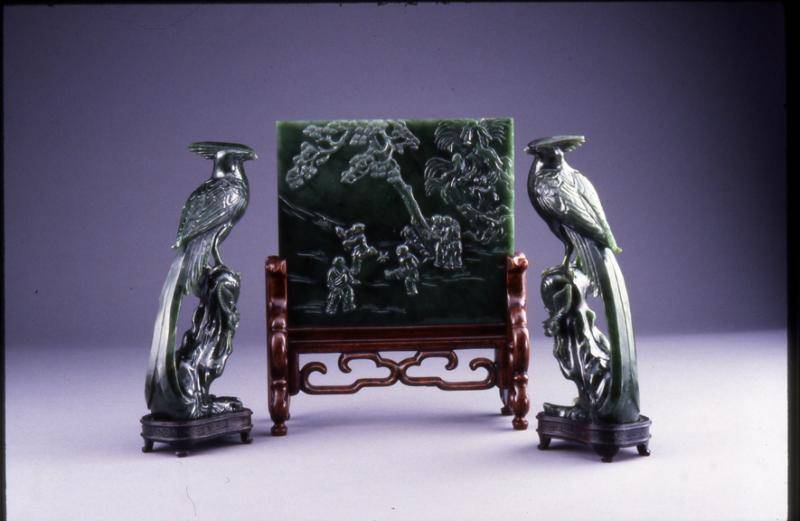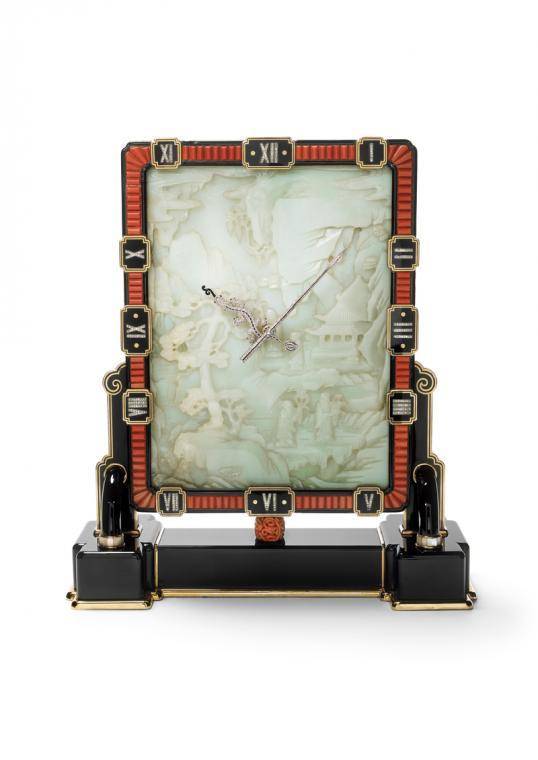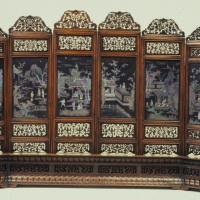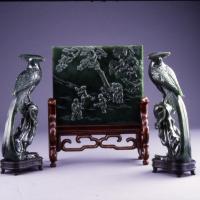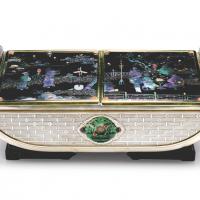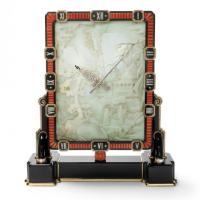In Brilliant: Cartier in the 20th Century, we emphasize the impact of motifs and materials from non-Western cultures on Cartier’s designs. Places like India, Egypt, China, and Japan were sources of endless fascination to Europeans and Americans in the early decades of the 1900s, and Cartier sought inspiration from those cultures. You can see works of art similar to Cartier’s inspirational sources right in the Denver Art Museum’s collection galleries.
With Cartier in mind, our Asian art feels like a treasure trove of inspiration, and evokes a recollection by Cartier designer James Gardner, who said of his arrival at the jewelry house in 1923:
“Everything grows from something that grew before and the room contained a library of things that had gone before; Chinese carpets, Celtic bronze work, Japanese sword hilts, arabesques ….”
Louis Cartier (1875-1942), one of the grandsons of the firm’s founder, collected art, books, and decorative objects from all over the world, and made that library of materials available to the jewelry house’s designers.
One recent afternoon, I revisited the DAM’s Asian art galleries and put myself in the shoes of a Cartier designer. I was delighted to find several pieces that, I think, relate directly to items in Brilliant. See the slide show below for images.
Chinese Influences
In the China gallery, the Six-panel Table Screen with Figures in Landscape from Qing Dynasty, Kangxi period (1662-1772) showcases the same mother-of-pearl lacquer technique as some notable objects in Brilliant including the gorgeous 1927 Vanity Set on loan from Barbra Streisand, and the 1925 Table Cigarette Box with a luminescent Chinese lacquer top.
I was also excited to see, in our own collection, a Chinese carved jade Table Screen, possibly from the 1800s, of the same type that Cartier craftsmen repurposed into a modern Large Screen Clock in 1926 (though that one in white jade).
Japanese Influences
My final Cartier-inspired delights in the DAM’s Asian art galleries were these little toggles and multiple-compartment carrying cases, or inrōs, from Japan in the 1700s and early 1800s that were used for holding small items like medicine. I couldn’t help but compare them to some of Cartier’s vanity cases, like the Chinese Vanity Case from 1925.
Part of Cartier’s contribution to modern design is how they respectfully transformed historic artifacts for a twentieth-century lifestyle. Like most artists, Cartier designers found inspiration everywhere, including museums. Walk through our galleries with a new perspective and consider what else at the DAM might inspire a Cartier designer or any other creative mind.
Image credit: (Top) Vanity set. Cartier Paris, 1927. Silver, gold, laque burgauté panels, enamel, coral, obsidian, glass. From the collection of Barbra Streisand.

